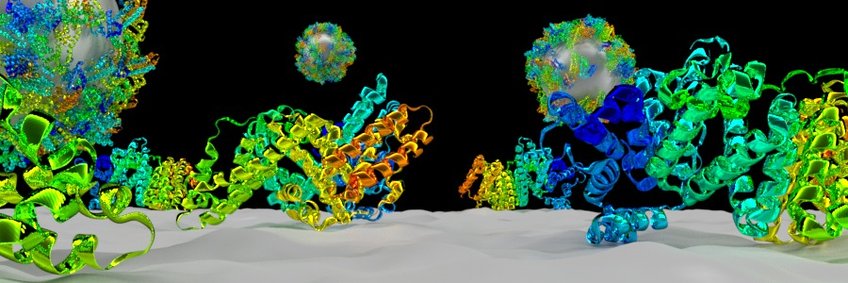
Interactions of nanocarriers with biological components: Engineering interfaces
Currently, the field of nanomedicine is evolving around nanomaterials being developed as diagnostic and therapeutic agents. Most studies investigate the nanomaterials as carrier systems for either drugs or other biologically active substances. In this regard, polymeric materials offer a great variety of tunable systems with the advantage of possibly being biocompatible and biodegradable. To be able to effectively translate a designed nanocarrier system into successful clinical studies, the behavior of those systems in the biological environment has to be understood. As a result of the interaction between nanocarriers and biological components, e.g. in the blood, a new biologically relevant interface is created – the so-called “protein” or “biomolecule corona”. This new interface of molecules surrounding the nanocarriers alters their chemically defined identity and consequently determines the biological fate such as aggregation, cell uptake and blood circulation time. Ideally, the interactions between the nanocarriers and biomolecules could be controlled and utilized to “engineer” a corona with certain functionalities.
We are currently focusing on the defined analysis of interactions between blood plasma proteins and polymeric nanocarriers by applying a combination of different physicochemical techniques including dynamic and static light scattering (DLS/SLS), isothermal titration calorimetry (ITC), high performance liquid chromatography (HPLC), asymmetric flow field-flow fractionation (AF-FFF), gel electrophoresis and differential scanning fluorimetry (DSF). Together with the group of Prof. Volker Mailänder also liquid chromatography-mass spectrometry is used to analyze protein patterns. A combination of these analytical methods allows addressing multiple aspects of protein-nanocarrier interactions like the characterization of binding affinities, determination of aggregation phenomena in concentrated blood plasma, evaluation of protein stability etc.
Additionally, we are focusing on covalent and non-covalent surface "engineering" with proteins or other biomolecules that feature interesting biological properties. These properties range from "stealth" characteristics (i.e. prolonging blood circulation time by reducing unspecific cell uptake) to active targeting effects and combinations of both. This engineering is a current topic in the EU wide collaborative project "BOW - Biogenic Organotropic Wetsuits". BOW is part of the FET Proactive: emerging paradigms and communities call and aims at developing a versatile platform to coat nanomaterials with extracellular vesicle membranes and tailoring them via specific surface functionalization for biomedical applications.